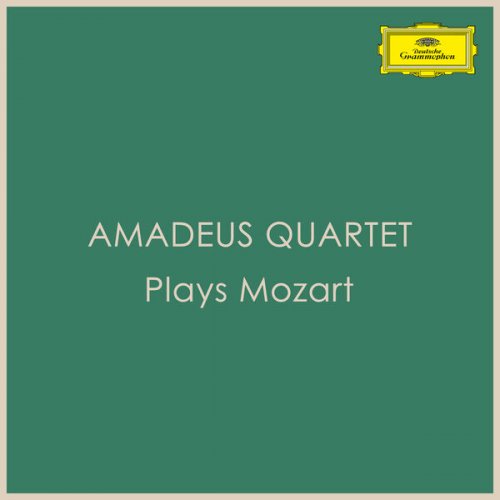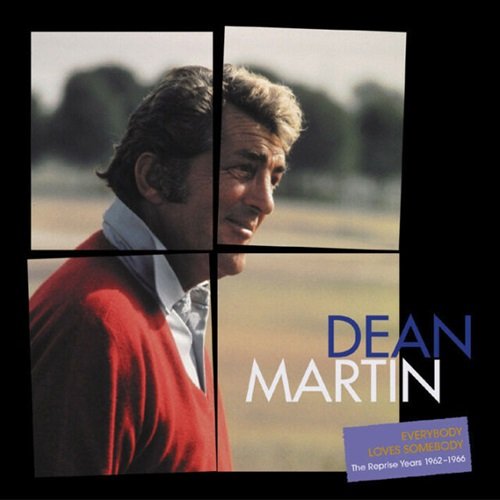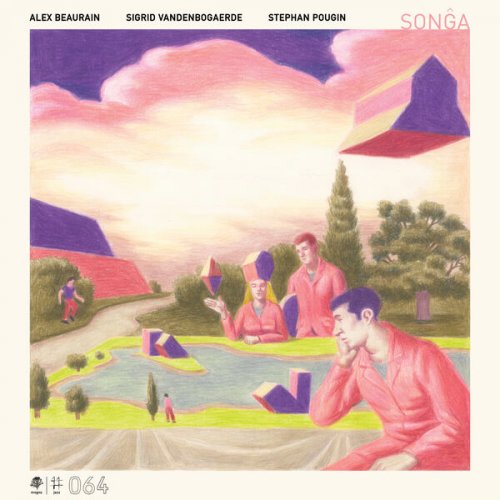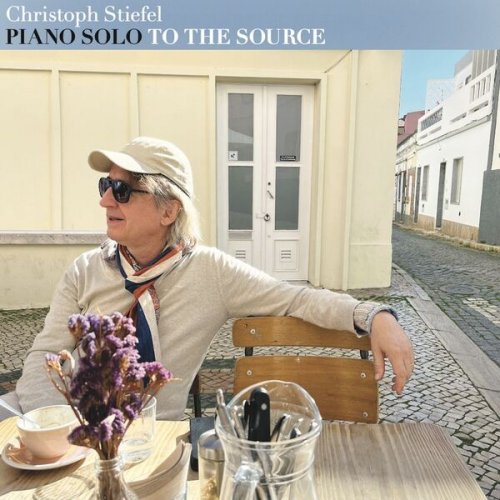Amadeus Quartet - Amadeus Quartet plays Mozart (2022)

Artist: Amadeus Quartet
Title: Amadeus Quartet plays Mozart
Year Of Release: 2022
Label: UMG Recordings, Inc.
Genre: Classical
Quality: FLAC (tracks)
Total Time: 8:12:21
Total Size: 1.79 GB
WebSite: Album Preview
Tracklist:Title: Amadeus Quartet plays Mozart
Year Of Release: 2022
Label: UMG Recordings, Inc.
Genre: Classical
Quality: FLAC (tracks)
Total Time: 8:12:21
Total Size: 1.79 GB
WebSite: Album Preview
01. I. Allegro
02. II. Andante
03. III. Presto
04. I. Andante
05. II. Allegro di molto
06. III. Allegro assai
07. I. Allegro
08. II. Andante
09. III. Presto
10. I. Allegro
11. II. Andante
12. III. Molto allegro
13. I. Presto
14. II. Adagio
15. III. Tempo di Menuetto
16. I. Allegro
17. II. Andante
18. III. Presto
19. I. Allegro
20. II. Andante un poco allegretto
21. III. Tempo di Menuetto
22. I. Andante
23. II. Allegro
24. III. Rondo (Allegro grazioso)
25. I. Allegro
26. II. Un poco adagio
27. III. Presto
28. I. Allegro
29. II. Andante
30. III. Menuetto
31. IV. Allegro
32. I. Molto allegro
33. II. Andante
34. III. Menuetto
35. IV. Rondeaux (Allegro)
36. I. Andante
37. II. Menuetto
38. III. Un poco adagio
39. IV. Rondeaux (Allegro)
40. I. Adagio - Allegro assai
41. II. Menuetto
42. III. Andante
43. IV. Allegro assai
44. I. Allegro spiritoso
45. II. Adagio
46. III. Menuetto
47. IV. Allegro assai
48. I. Allegro ma molto moderato
49. II. Andantino grazioso
50. III. Menuetto
51. IV. Allegro
52. 1. Allegro
53. 2. Adagio - attacca
54. 3. Rondeau
55. 1. Andante
56. 2. Tempo di menuetto
57. 1. Allegro vivace assai
58. 2. Moderato
59. 3. Adagio
60. 4. Allegro assai
61. 1. Allegro ma non troppo
62. 2. Andante con moto
63. 3. Menuetto. Allegro
64. 4. Allegro vivace
65. 1. Allegro moderato
66. 2. Allegretto
67. 3. Menuetto (Allegretto)
68. 4. Allegro
69. 1. Allegro
70. 2. Menuetto (Allegretto)
71. 3. Adagio ma non troppo
72. 4. Adagio - Allegro
73. 1. Allegro
74. 2. Menuetto
75. 3. Andante
76. 4. Allegro non troppo
77. 1. Allegro
78. 2. Menuetto (Allegretto)
79. 3. Andante
80. 4. Allegro
81. 1. Allegro moderato
82. 2. Andante
83. 3. Minuetto (Allegretto)
84. 4. Allegro ma non troppo - Più allegro
85. 1. Adagio - Allegro
86. 2. Andante cantabile
87. 3. Menuetto. Allegretto
88. 4. Allegro
89. 1. Allegretto
90. 2. Andante
91. 3. Menuetto (Allegretto)
92. 4. Allegretto
93. 1. Allegretto
94. 2. Menuetto (Allegretto)
95. 3. Adagio
96. 4. Allegro
97. 1. Allegro
98. 2. Larghetto
99. 3. Menuetto (Moderato)
100. 4. Allegro assai
The Amadeus Quartet developed a reputation as one of the finest string quartets from the second half of the twentieth century. Its tradition and style were Viennese and its repertory was largely Austro-German: Haydn, Mozart, Beethoven, Schubert, and Brahms were at the core, though it performed works by Smetana, Franck, Bruckner, Bartók, Britten, Tippett, and other twentieth century composers. They also regularly performed quintets and sextets (Mozart, Brahms, Schubert, etc.), usually adding cellist William Pleeth and/or violist Cecil Aronowitz. The Amadeus was one of the longest-lived quartets, performing for 40 years without a personnel change, and it was also among the most popular string quartets in England, Germany, the United States, and parts of Europe. It made numerous recordings -- many still available -- for several labels, including DG, Decca, and EMI.
The Amadeus Quartet was formed in London in 1947 and first named the Brainin Quartet after first violinist (and ensemble leader) Norbert Brainin. Owing to their Jewish heritage, three of the group's members -- Brainin, Siegmund Nissel (second violinist), and Peter Schidlof (violist) -- fled Vienna after Hitler's 1938 annexation of Austria. The three players later met English cellist Martin Lovett to complete what would become one of the most celebrated quartets of the twentieth century.
Its first concert took place at Dartington International Summer School (a music festival, as well as music school) on July 13, 1947. That performance was given under the group's original name, but on January 10, 1948, it gave its premiere concert as the Amadeus Quartet at London's Wigmore Hall.
By the early '50s, the ensemble had achieved international recognition, as tours of the Americas, Asia, Japan, and Australia regularly garnered critical acclaim. Its early recordings were also drawing positive responses from both critics and public. In 1960 Nissel became ill, for a time halting the ensemble's activities. He suffered a second serious sickness in 1981, causing the now-celebrated group to play as a trio until his recovery.
Beside its considerable recording activity (the Amadeus Quartet was said to have made some 200 recordings during its 40-year association), the players also taught: in 1978 they began teaching at the Hochschule in Cologne, Germany, and for the last two years of the group's existence (1986-1987) they taught at London's Royal Academy of Music. In 1987 Schidlof suddenly died. The other members decided he could not be replaced and disbanded. © Robert Cummings
The Amadeus Quartet was formed in London in 1947 and first named the Brainin Quartet after first violinist (and ensemble leader) Norbert Brainin. Owing to their Jewish heritage, three of the group's members -- Brainin, Siegmund Nissel (second violinist), and Peter Schidlof (violist) -- fled Vienna after Hitler's 1938 annexation of Austria. The three players later met English cellist Martin Lovett to complete what would become one of the most celebrated quartets of the twentieth century.
Its first concert took place at Dartington International Summer School (a music festival, as well as music school) on July 13, 1947. That performance was given under the group's original name, but on January 10, 1948, it gave its premiere concert as the Amadeus Quartet at London's Wigmore Hall.
By the early '50s, the ensemble had achieved international recognition, as tours of the Americas, Asia, Japan, and Australia regularly garnered critical acclaim. Its early recordings were also drawing positive responses from both critics and public. In 1960 Nissel became ill, for a time halting the ensemble's activities. He suffered a second serious sickness in 1981, causing the now-celebrated group to play as a trio until his recovery.
Beside its considerable recording activity (the Amadeus Quartet was said to have made some 200 recordings during its 40-year association), the players also taught: in 1978 they began teaching at the Hochschule in Cologne, Germany, and for the last two years of the group's existence (1986-1987) they taught at London's Royal Academy of Music. In 1987 Schidlof suddenly died. The other members decided he could not be replaced and disbanded. © Robert Cummings

![Demo Rumudo - Second Nature (2025) [Hi-Res] Demo Rumudo - Second Nature (2025) [Hi-Res]](https://www.dibpic.com/uploads/posts/2025-12/1765883076_cover.jpg)
![Betty Carter - The Music Never Stops (2019) [Hi-Res] Betty Carter - The Music Never Stops (2019) [Hi-Res]](https://www.dibpic.com/uploads/posts/2025-12/1765896843_bcmn500.jpg)





![Stefan Lovin - Heaven Shines Like Silver (2025) [Hi-Res] Stefan Lovin - Heaven Shines Like Silver (2025) [Hi-Res]](https://img.israbox.com/img/2025-12/12/iof4nx75kf3sa1i0vq1k07kqg.jpg)